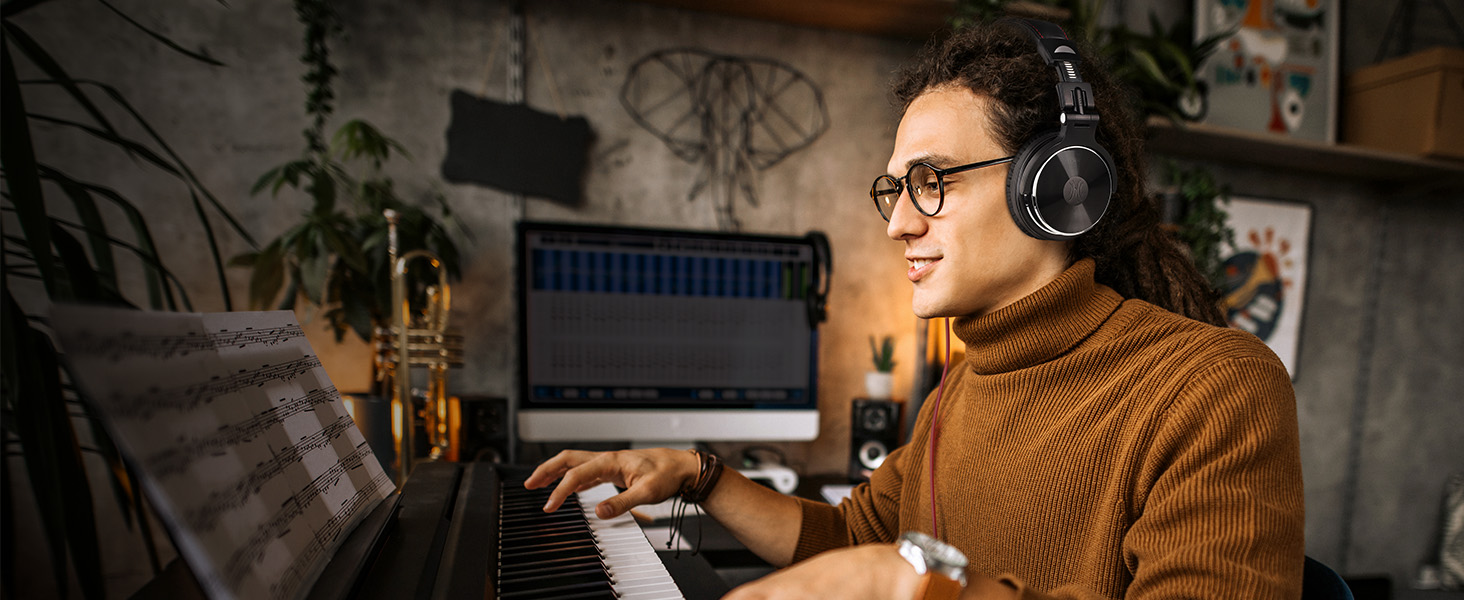The Next Personal Computer is in Your Ear: The Future of Hearable Technology
Update on Oct. 23, 2025, 12:54 p.m.
For the past two decades, we’ve understood headphones through a simple paradigm: they are output devices. They take a digital signal and turn it into sound for our enjoyment. Products like the OYIB MD058A represent the pinnacle of this paradigm—wireless, reliable, and incredibly accessible. But this entire model is on the verge of a profound transformation.
The next great platform shift in personal computing won’t happen on your desk or in your pocket. It will happen in your ear. We are entering the era of “Hearables,” where the humble earbud evolves from a passive accessory into an active, intelligent platform that monitors our health, mediates our reality, and seamlessly connects us to the digital world. The market for this technology is expected to surge past the $100 billion mark by 2030, according to Grand View Research, signaling a fundamental change in how we interact with technology. The foundation for this future—miniaturized batteries, reliable wireless connectivity, and sophisticated microphones—is already here, packed inside every pair of modern earbuds.

The Ear as a Health Hub: The Hearable as Guardian
Your wrist has become prime real estate for health tracking, but your ear is even better. The ear canal is a dark, stable environment, and the skin is thin, making it an ideal location for biometric sensors. The hearable of the near future will be a comprehensive health guardian.
- Beyond Step Counting: Research published in Nature Scientific Reports has shown that in-ear photoplethysmography (PPG) sensors can measure heart rate and blood oxygen levels with greater accuracy than wrist-worn devices. Future earbuds will passively monitor your vital signs throughout the day.
- Core Body Temperature: The ear is one of the most reliable places to measure core body temperature, offering early detection of fevers and illness.
- Posture and Balance: By integrating accelerometers and gyroscopes, a hearable can track the subtle movements of your head, acting as a highly effective posture coach or even detecting a fall in an elderly user.
Your earbuds won’t just play your workout playlist; they’ll analyze your performance, monitor your exertion, and keep you safe.

Breaking Down Barriers: The Hearable as Universal Translator
But monitoring our internal state is only one part of the equation. The true power of a hearable device lies in its ability to mediate our interaction with the world around us, starting with the most fundamental human connection: conversation.
- From ENC to “Super-Hearing”: The same multi-microphone technology used for Environmental Noise Cancellation today will evolve. With the help of on-board AI, future hearables will allow you to selectively filter and enhance sounds in your environment. Imagine being able to “turn down” the background music in a loud restaurant to focus on your dinner companion’s voice, creating a personalized “audio zoom.”
- Real-time, Invisible Translation: We’ve already seen the first generation of this with products like Google’s Pixel Buds. In the next five to ten years, this will become a standard feature. You’ll be able to have a fluid, natural conversation with someone speaking another language, with the translation whispered directly and instantly into your ear. The hearable will become a key to unlocking seamless global communication.
Painting the World with Sound: The Hearable as AR Interface
Once our devices can perfectly understand and manipulate the sound of the real world, the next logical step is to begin adding new, digital layers of sound on top of it. This is where the hearable transforms from a communication tool into a true audio augmented reality interface.
- The Evolution of Spatial Audio: Technologies like Apple’s Spatial Audio, which uses head-tracking to create a 3D soundscape, are just the beginning. Imagine walking down a street and hearing a navigation prompt that seems to come from the actual corner you need to turn on. Or visiting a museum where historical narration is spatially anchored to the exhibits you’re looking at.
- A New Kind of Notification: Instead of a jarring buzz in your pocket, a future notification might be a subtle, directional audio cue—a gentle chime that seems to come from the direction of your home as you receive a message from your family.
- Shared Public Experiences with Auracast: This new Bluetooth capability will allow public venues like airports, gyms, and conference halls to broadcast audio directly to your personal earbuds. You’ll be able to tune into the silent TV at the airport gate, listen to a museum tour in your preferred language, or receive emergency announcements, all through the device already in your ear.
Conclusion: The Coming Auditory Revolution
The simple wireless earbuds of today are the seeds of this auditory revolution. They are normalizing the idea of having a tiny computer in our ear all day. The transition will be gradual. First, they will get better at their current job. Then, they will become indispensable health and communication tools. Finally, they will become our primary interface for a digitally overlaid world. The future of personal computing isn’t a screen you look at, but a soundscape you inhabit. And it’s closer than you think.


















